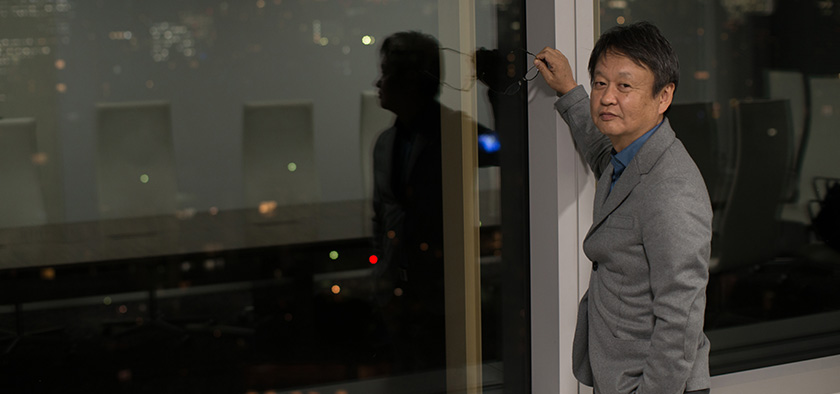

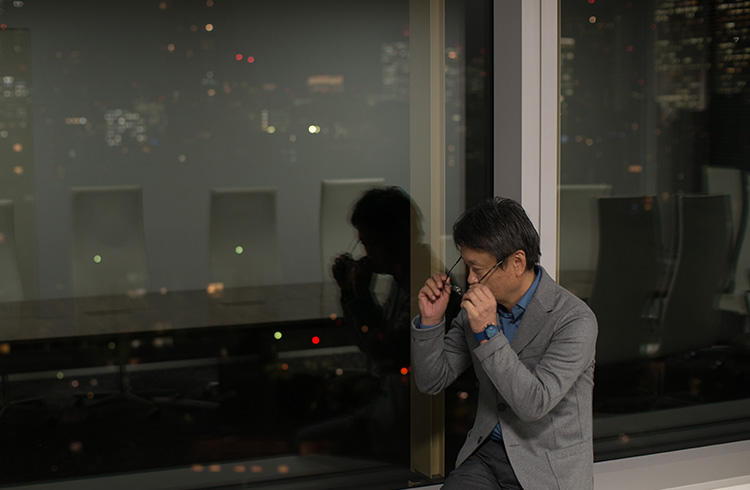
Designing a place with a culture for everyone
Turning on the “small switches” to boost the metabolism of a town
- JP / EN
Naoto Fukasawa is director of 21_21 DESIGN SIGHT and served as head of jury for the Good Design Award in 2013; the Good Design Exhibition showing the award-winning works was held for the first time in Tokyo Midtown last year. Fukasawa has good knowledge of Roppongi, and he talked about the outline of Roppongi, the relationship between design and art, and how he thinks the area should be developed in the future. Providing us with an overview of the transformation of Roppongi in the last few decades, he gave us an insightful interview which was most fitting to start off 2014.
Roppongi's greenery - the area's big asset
I think that the development of Roppongi as an area of design and art is going well so far. I've designed the "Super Security Light Poles" in Midtown Garden, but I've had ties to the area of Roppongi long before Tokyo Midtown was built.
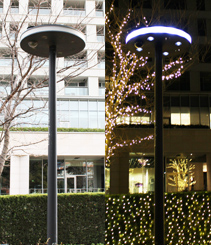
Super Security Light Poles
Multi-purpose security lights equipped with surveillance cameras and alarm systems and which also serve as access points for wireless LAN. There are nine such security lights installed in Midtown Garden. LED lighting is used for the outer circular lamp which is normally white, but which glows red in times of emergency.
Years ago, my office used to be in the AXIS Building, so every day I would walk past the area of what is now Tokyo Midtown to Nogizaka station for the train back home. I can still recall how the hawkers yelled in the streets; Roppongi at that time was filled with foreigners. Now it has become an area where adults can both play and work, and its culture has grown.
I think Roppongi naturally attracts people. The biggest drawing power is that despite being in the middle of the Tokyo, there is still a lot of greenery left. There are places like Midtown Garden, Hinokicho Park and the Mouri Garden at Roppongi Hills. The conventional approach would have been to make more effective use of the land, but fortunately, the greenery was opened up to the public and that has become the area's big asset.
A 24-hour area with the best of everything
In addition to offices, Roppongi now has many commercial facilities and art museums as well as hotels that are said to have the best services in Tokyo. In the last 10-15 years or so, the area has been transformed almost beyond recognition. Of course, at the other end of Roppongi, the nightlife area still exists, but I suppose we probably need to retain a bit of that. Day or night, at any time of the day, there are places where people can relax - Roppongi has become an area with the best of everything.
Saying that Roppongi is an area that never sleeps might make it sound as if the area only has entertainment, but I mean that it's a place which is operating 24 hours a day. For example, during "Roppongi Art Night", there are events held in the streets for 24 hours a day, and while these are going on, there are people doing work as usual. When you think of towns, you might think of streets sprawling sideways, but in Roppongi, the expansion is also vertical. There are thousands of people working and looking down at the streets from above.
A place with a culture that everyone takes part in
Nowadays, it's not enough to simply make a building and rent to tenants. It's become necessary to develop towns in a way that allows everyone in the town to take part in its culture.
"Design and art" are the keywords for this kind of development. In Tokyo Midtown and Roppongi Hills, the slogan is to create an area of design and art, and everyone seems to be working toward the same goal. I also serve as director of 21_21 DESIGN SIGHT, so I know about these things, but it's remarkable how so many events, big and small, are held in Roppongi.
I think the good thing is that the activities are not just concentrated in one place - there are many spots scattered here and there where you can drop by. You might want to go to see the illuminations, or go to the skate rink, or view the cherry-blossom trees when they are in bloom. The elements of design and art are nicely blended into the various events of each season. When towns and commercial facilities begin to decline, they often try to draw people with amusements, but Roppongi doesn't try too hard to attract people.
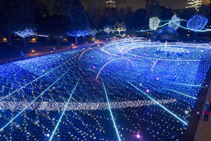
Illumination
Among the many events held during "Midtown Christmas" is the illumination event. There is the major attraction "Starlight Garden" where lights, mainly of blue color, are used to illuminate the Tokyo Midtown grass square, while trees in the vicinity are adorned with LED lights. Around 5.5 million people visit this annual event held from November to December.
In Roppongi, you can shop around, eat at restaurants and also encounter culture. You can enjoy yourself here, whether or not you have come with a specific purpose. People who come here have high expectations, and Roppongi tries to meet those expectations. There are no places that are like Roppongi, don't you think? Marunouchi is not similar, and Ginza is not quite like it either.

The changing outline of Roppongi
I've always thought about design in terms of "outline". Just as there are outline for things and designs, I believe that there are outline for towns. For example, it can be a geographical thing - such as which parts can be called Roppongi. People must have their own ideas about what the shape of Roppongi looks like; for some people the borders might be along the Iikura intersection or at the far end of Tokyo Midtown.
In the past, the Almond café used to be the common and bland spot to wait for people, but these days, people don't meet in front of Almond very much. They now agree to meet each other at the Toraya (the Japanese confectionary shop) in Tokyo Midtown or in front of 21_21 DESIGN SIGHT, or maybe they go to a restaurant in Roppongi Hills. The culture has certainly grown and become sophisticated. And it seems to me that the people who gather in Roppongi now are totally different from the type of people who came here in the past.
Development in Tokyo originally began in places where many railways intersect; the big stations and their vicinities such as Shinjuku and Shibuya were among the first to be developed. But the streets of Roppongi have been developed despite the fact that the railways are far away. When you live in Roppongi for a while, you can sense that it is somehow different from other areas, and I find that interesting.
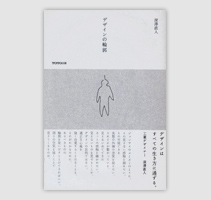
Design no rinkaku (The outline of designs)
A collection of essays by Naoto Fukasawa published in 2005 by Toto Ltd. The book includes many photos of Fukasawa's works as well as transcripts of conversations with friends and artists. The essays on 40 subjects include Fukasawa's philosophy on design, the many encounters he has made, and his thoughts on everyday life.
Good Design Exhibition 2013 and Roppongi
In October last year, we held the "Good Design Exhibition 2013" in Roppongi with the Tokyo Midtown Hall as the main venue. Before that, we had held the exhibition at Tokyo Big Sight and there were many tough challenges in relocating; for example, there were concerns about sufficient display space, and whether we would be able to draw enough people and things here. But as head of the jury, I thought it was absolutely necessary to hold the exhibition in Roppongi regardless of lack of space or any other problems.
The Good Design Exhibition is an event to display designs that have been recognized by everyone for their brilliance, and I wanted to hold the exhibition in the right place during the period called "Design Week". I strongly felt that these works of design needed to be shown in the right setting.
Until then, the tone of the exhibition had been somewhat like a trade show, tending to attract industry people, but last year, we were able to gain many visitors from the general public. I think we were able to show the wide spectrum of designs in an easy-to-understand way; people must have made unexpected discoveries and thought to themselves, "Oh, I didn't know that design refers to this kind of thing as well." Holding the exhibition in Roppongi was a symbolic event; I felt that the works of design had finally come to the place where they belong.
Designs are like "small switches"
I personally think of designs as being like small switches. Instead of turning a large wheel, a small dial is used to move a huge ship. While it's not like doing something big with a bang, designs can have tremendous power.
The Good Design Exhibition is one of the small but effective ways to steer a large town into the right direction. With 2,000 works of wonderful designs gathered in one place, there is no doubt that a great amount of energy is poured into the area.
Of course, we could have held the exhibition somewhere else. But compared to other places, Roppongi provides a far bigger platform for the constantly changing paradigms of design. I think that in other places, the seedlings of design have already taken root, and have been arranged in a way that is too orderly. In contrast, the area of Roppongi is not yet settled, and best of all, it does not have fixed notions about the definition of design.
A design museum for all the fuzzy things
Unlike contemporary art which has a proper definition, design is something that is very abstract and obscure. At 21_21 DESIGN SIGHT, we are currently holding an exhibition called "Toward a DESIGN MUSEUM JAPAN". When you hear "design museum", you probably wonder what kind of museum we want to create and what kind of things we would display there.
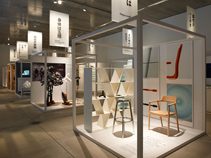
"Toward a Design Museum Japan" exhibition
An exhibition indicating the kind of role a new Japanese design museum could have in the future. The exhibition reassembles the content of the 23 exhibitions held since 2007 at 21_21 DESIGN SIGHT and is divided into four perspectives - "finding", "making", "linking" and "creating." Naoto Fukasawa is one of the people involved in planning the exhibition.
Photo: Masaya Yoshimura
But the beauty of a design museum is that it can function like a container, and we will be able to throw all the obscure things inside it. Design has that capacity - it encompasses a great deal of things. There tends to be fixed ideas about what art museums should be like, but no such notions exist toward design museums. 21_21 DESIGN SIGHT is a forerunner of a design museum; our aim is to always let visitors make discoveries of fresh designs and new approaches to design.
The area of Roppongi that we see today has been created by incorporating design. That's why it has the capacity to take in the fuzzy things that are called design. People who work in Roppongi may be working in fields totally unrelated to design, but they're probably aware that they are in that kind of culture.
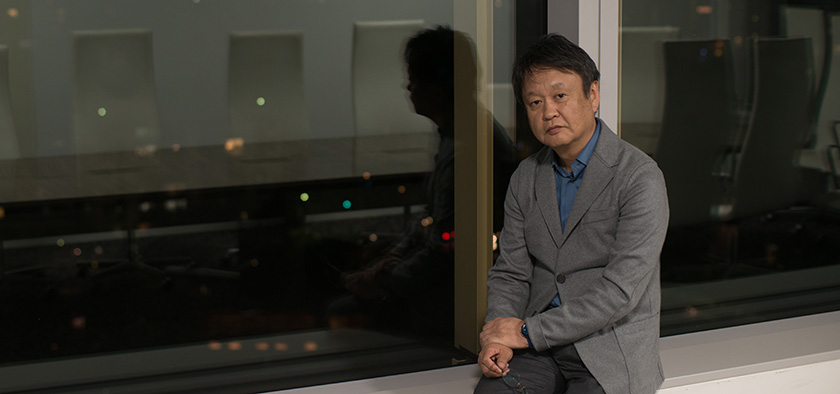
Towns with life and the process of metabolism
Towns are like human bodies and will die unless there is an ongoing process of metabolism. When you go to a regional city with few people walking about, you get the impression that the asphalt of the roads is dull and dry. Of course, a town with lots of people moving about in it becomes dirtier, but that is the very reason that a populated town is motivated to maintain and prettify its streets.
Towns are energized when plans are made for various cultural activities, events and frameworks, and when people come together to put those plans into action. The movement of people and things in a town are like breathing or the circulation of blood - the towns live by repeating the process of metabolism. In that sense, Roppongi seems to have much more life energy than in the past.
To avoid being hit by a "karakaze" (strong, dry wind), I think Roppongi should actively do all kinds of things to promote its metabolism. However, the activities should not be restrained by a sense of obligation. The essence of creativity is to do things spontaneously and to turn inspiring ideas into reality. So instead of resolving to hold the Good Design Exhibition every year, it's better to think about keeping Roppongi an interesting and energetic place.
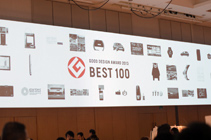
Good Design Exhibition 2013
An exhibition showing all the works that have won the Good Design Award of a given year. The event in 2013 was held for the first time in Tokyo Midtown, from Oct. 20 to Nov. 4 to coincide with "DESIGN TOUCH 2013".
Living and breathing in the town
The design and art events held in Roppongi are not like the conventional "so-and-so" art festivals or "so-and-so" triennale events; they are more close to everyday life. I think the events should be kept down-to-earth so that people who work in Roppongi can casually drop by to refresh themselves and appreciate design and art.
My office is in the nicest part of Minami Aoyama and yet I haven't been to any of the nearby establishments. (laughs) Now and then I am surprised to discover a charming shop I didn't know existed. However, what matters is placing oneself in a certain town and breathing the air of that town.
The word "design" can be used in so many contexts now, and not just when talking about physical objects. In fact, with the advance of technology, a lot of extraneous parts are being shorn away, and the trend is for physical things to become smaller and smaller or to disappear. But even when an object disappears, it doesn't mean that the function of the object has gone. That's why interface and interaction and communication have become increasingly important. I think that developing towns and maintaining the energy of towns will perhaps become the central purpose of design in the future.
Wearing a different pair of socks
The lifestyles and attitudes of people are greatly influenced by their surrounding environment. Company workers in particular spend considerably long hours in the same place; it can't be much fun just wearing the same suit every day, riding the same train and working very hard. I think many of the people in Roppongi have fine sensibilities and are interested in design, art and culture. So we need to plan events that will tickle the minds of these people.
A town should have the effect of slightly lifting people's moods and bringing a change of pace in their daily lives, and the people of the town and people from outside the town should mingle and raise each other's consciousness. To me, that is what a town with life is about. I hope to continue working in Roppongi and do my part in giving positive energy to the area - holding gallery tours, heading competition juries, and getting acquainted with the people of Tokyo Midtown. (laugh)
I hope Roppongi will always be a place where you can find something a little special - for example, after a long day at work, you might buy one item of prepared food or one bottle of wine which is slightly nicer than usual. And Roppongi should also be a place that prompts people to dress up a little. A person might think, "Since I'm going to Roppongi today, I will put on a pair of socks that I don't normally wear." The "small switches" I mentioned earlier refer to these small everyday matters. If tens of thousands of people turned on those switches at the same time, what an effect there would be... I think that's how a nice town is made.
Editor's thoughts
When we asked Fukasawa-san what kind of role he has in boosting the metabolism of Roppongi, he replied, "I'm just busy, that's all," making all of us laugh. Please read the blog article by the editorial department to learn about Fukasawa-san's mischievous side which we were unable to fully relate in this interview. (edit_kentaro inoue)



















